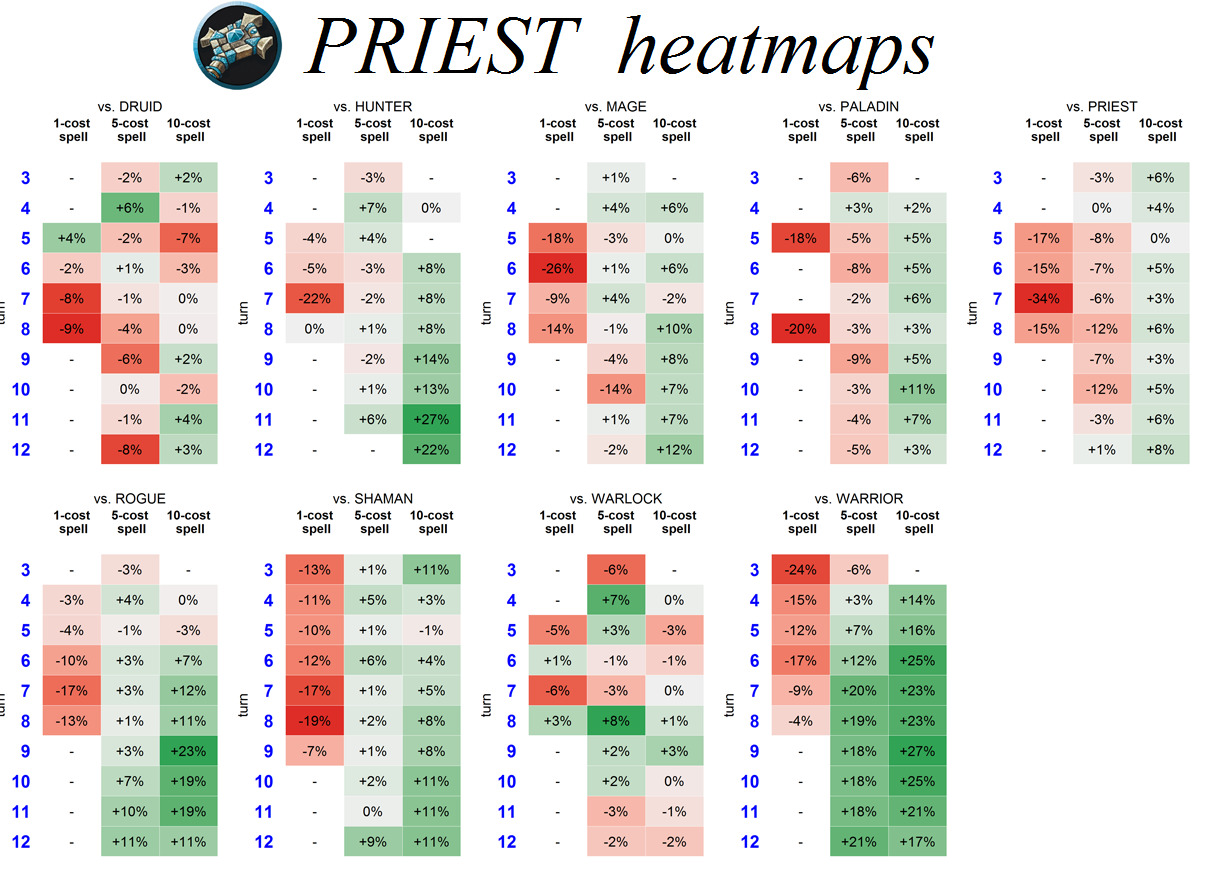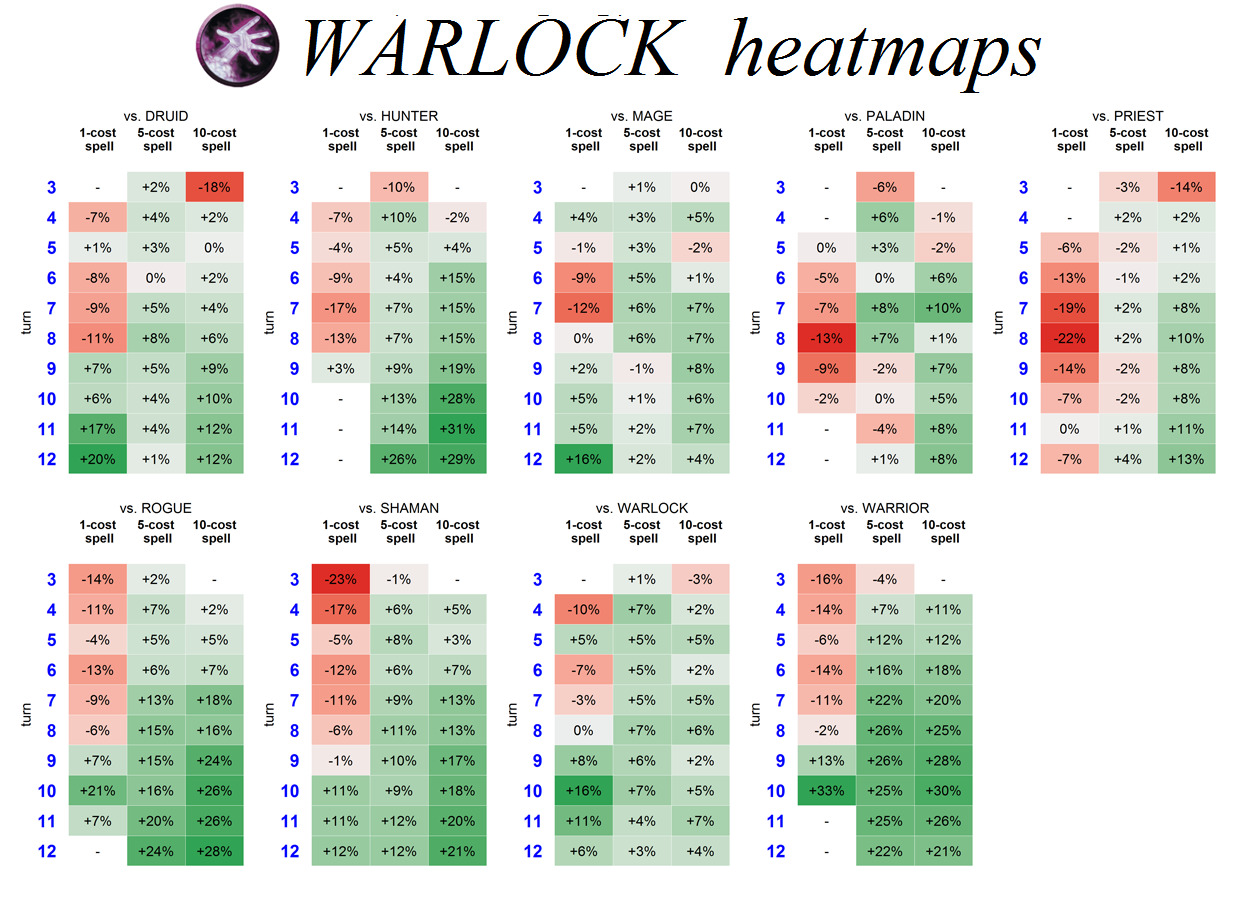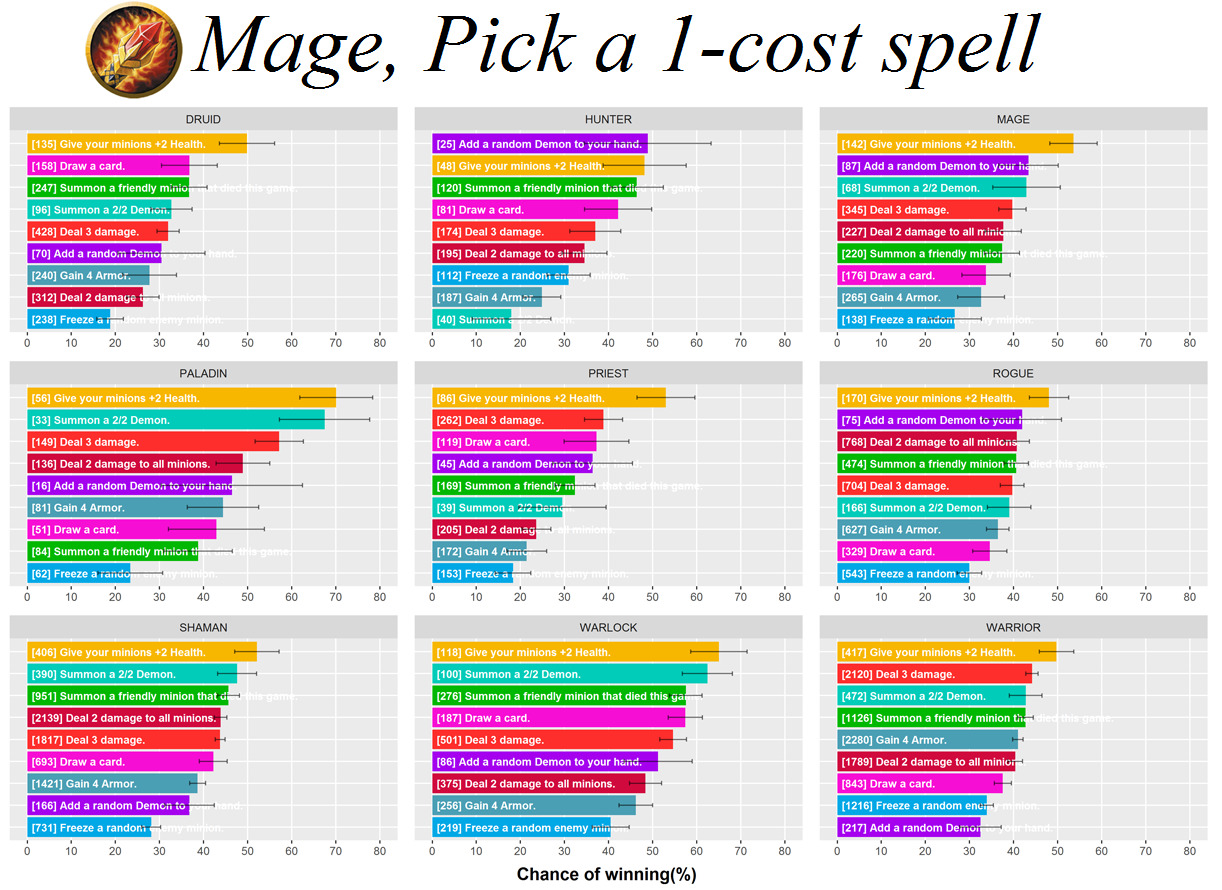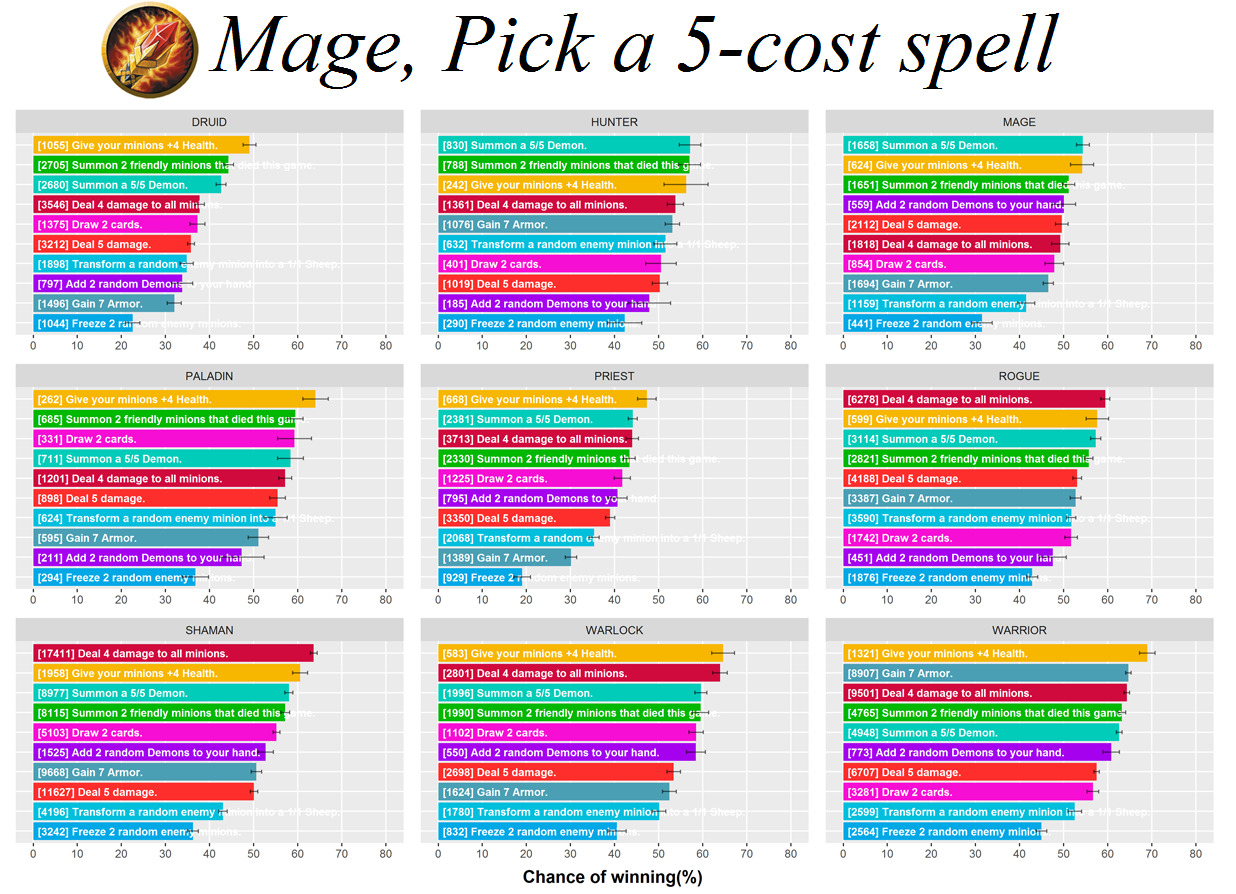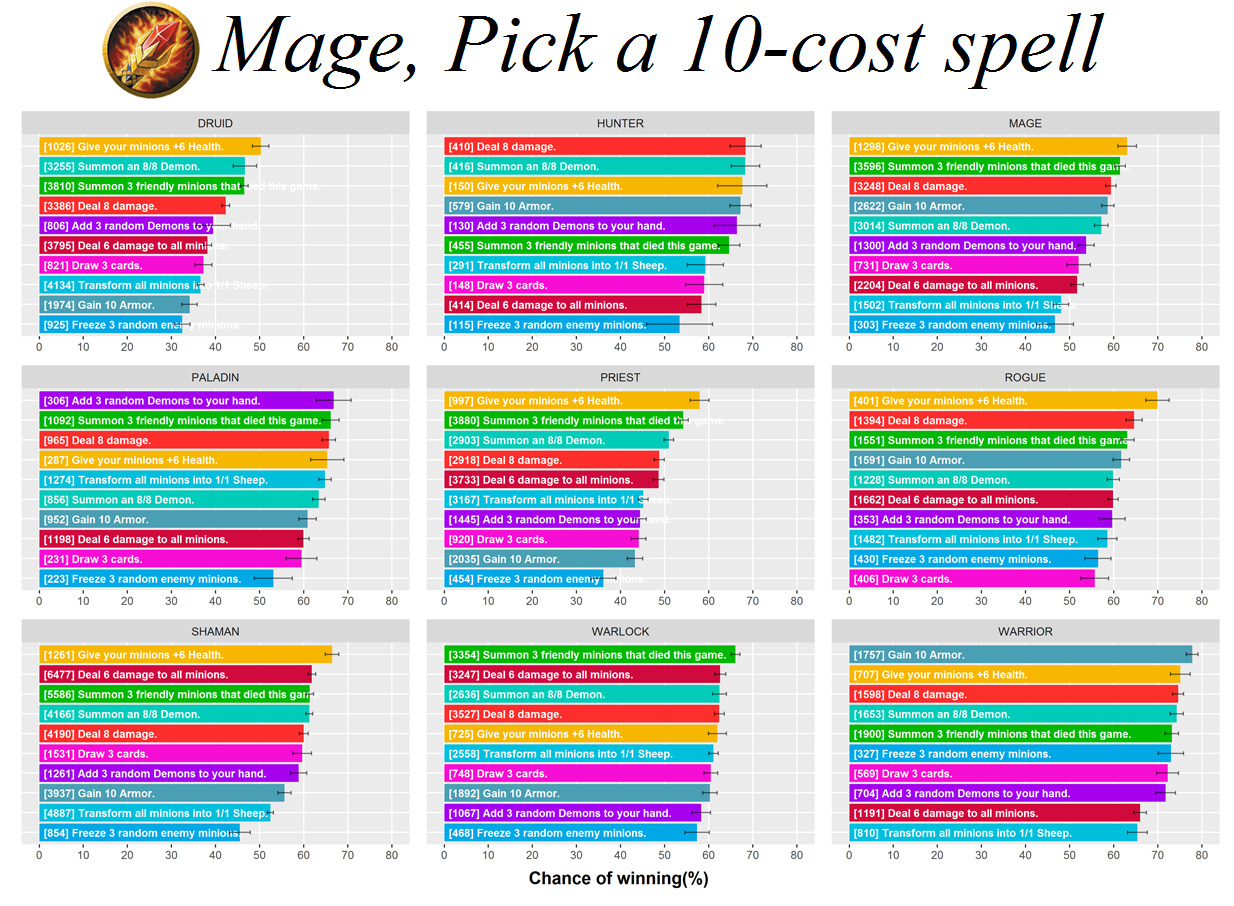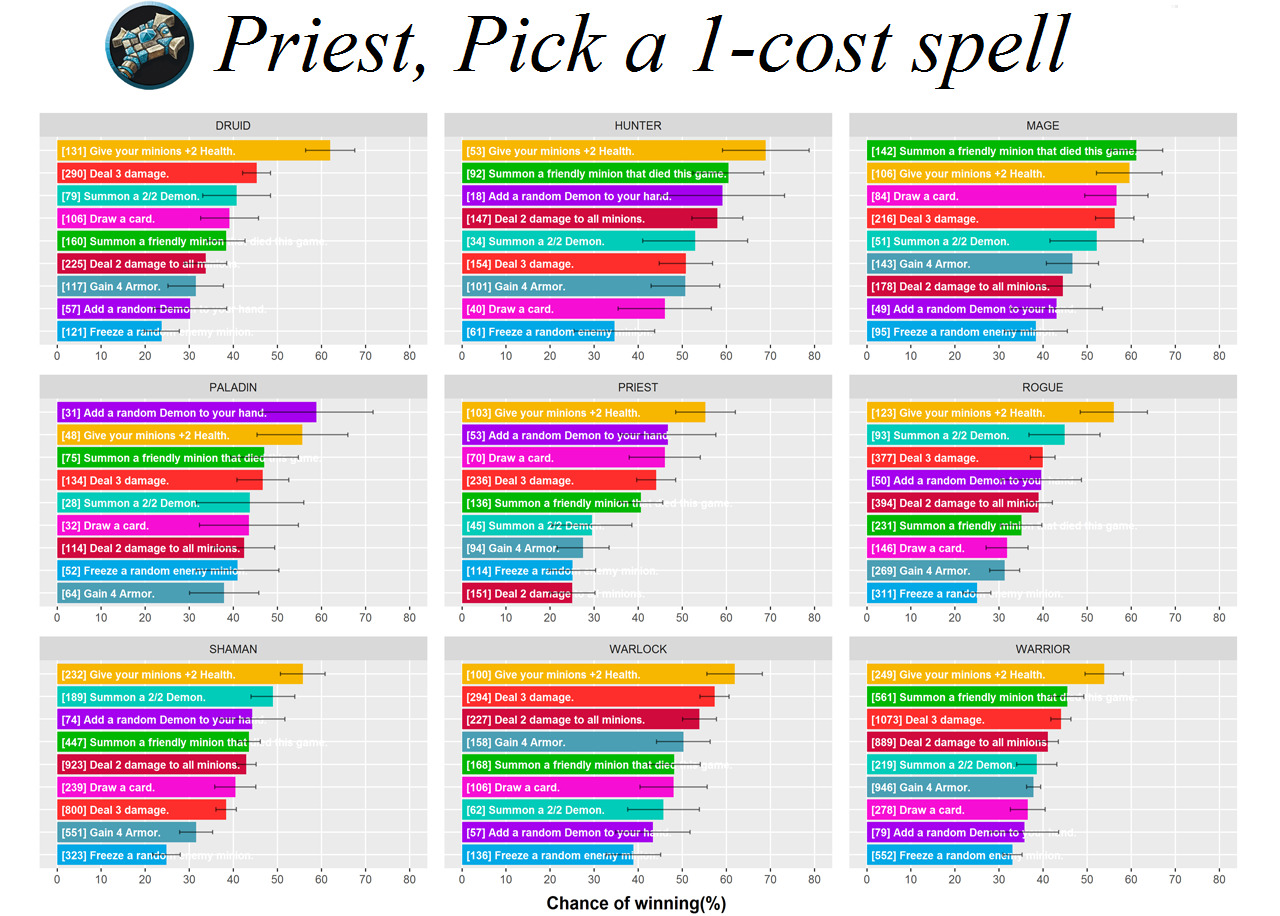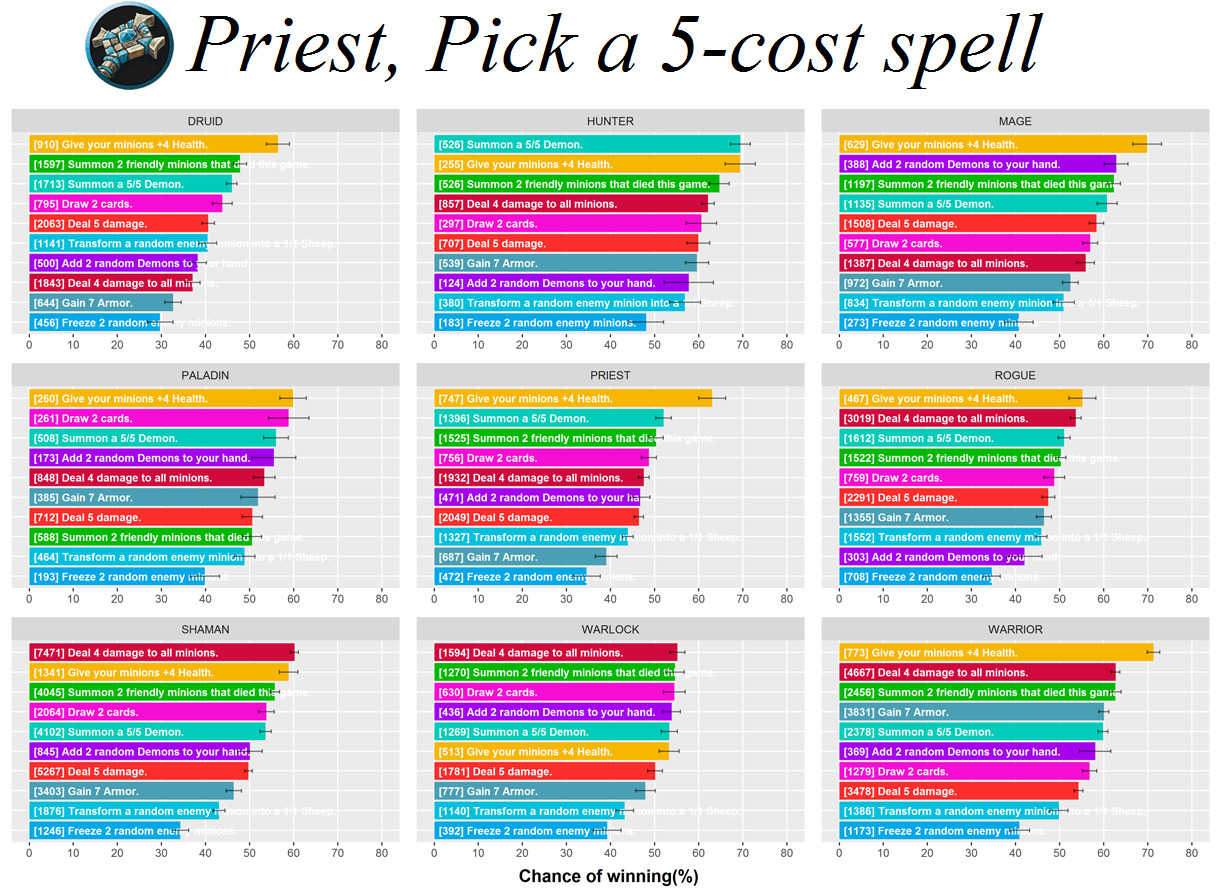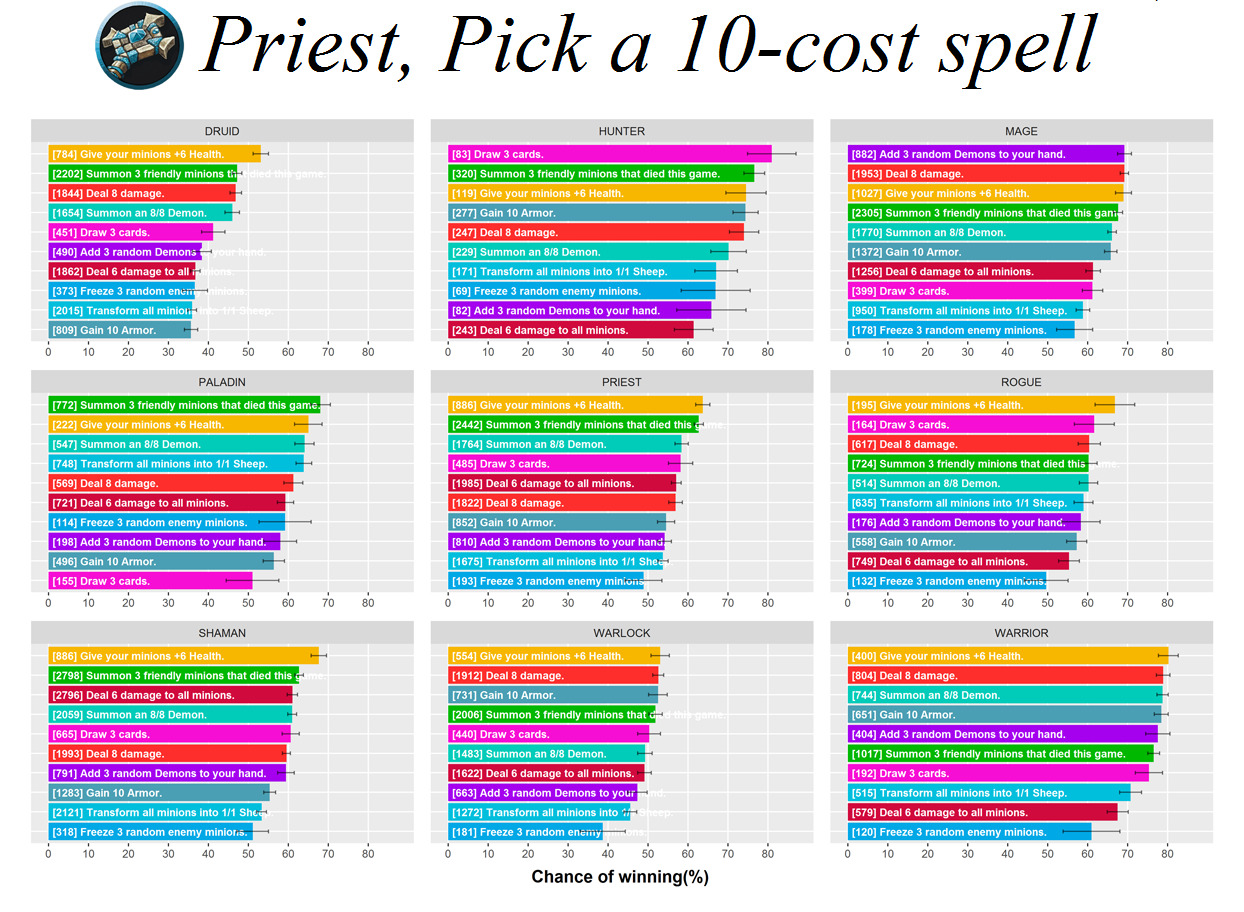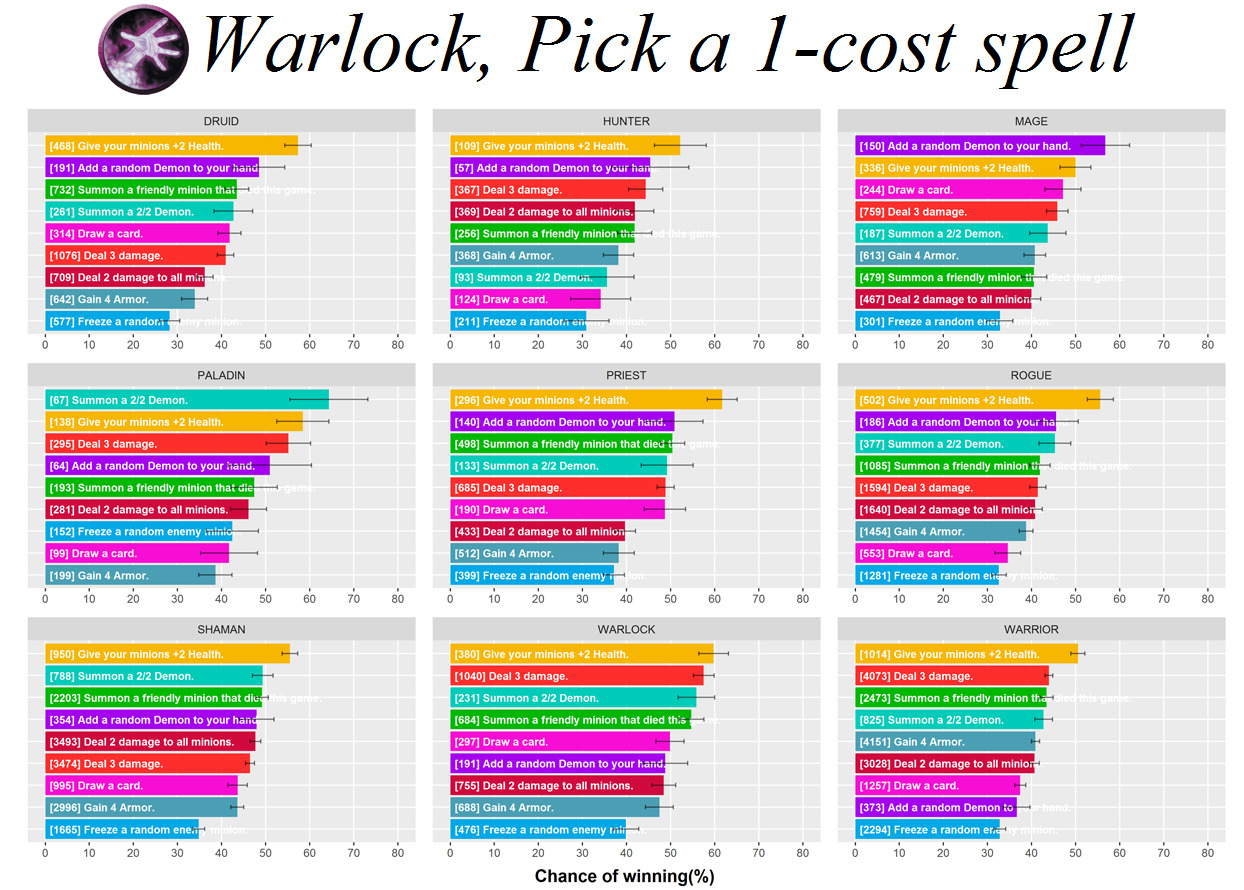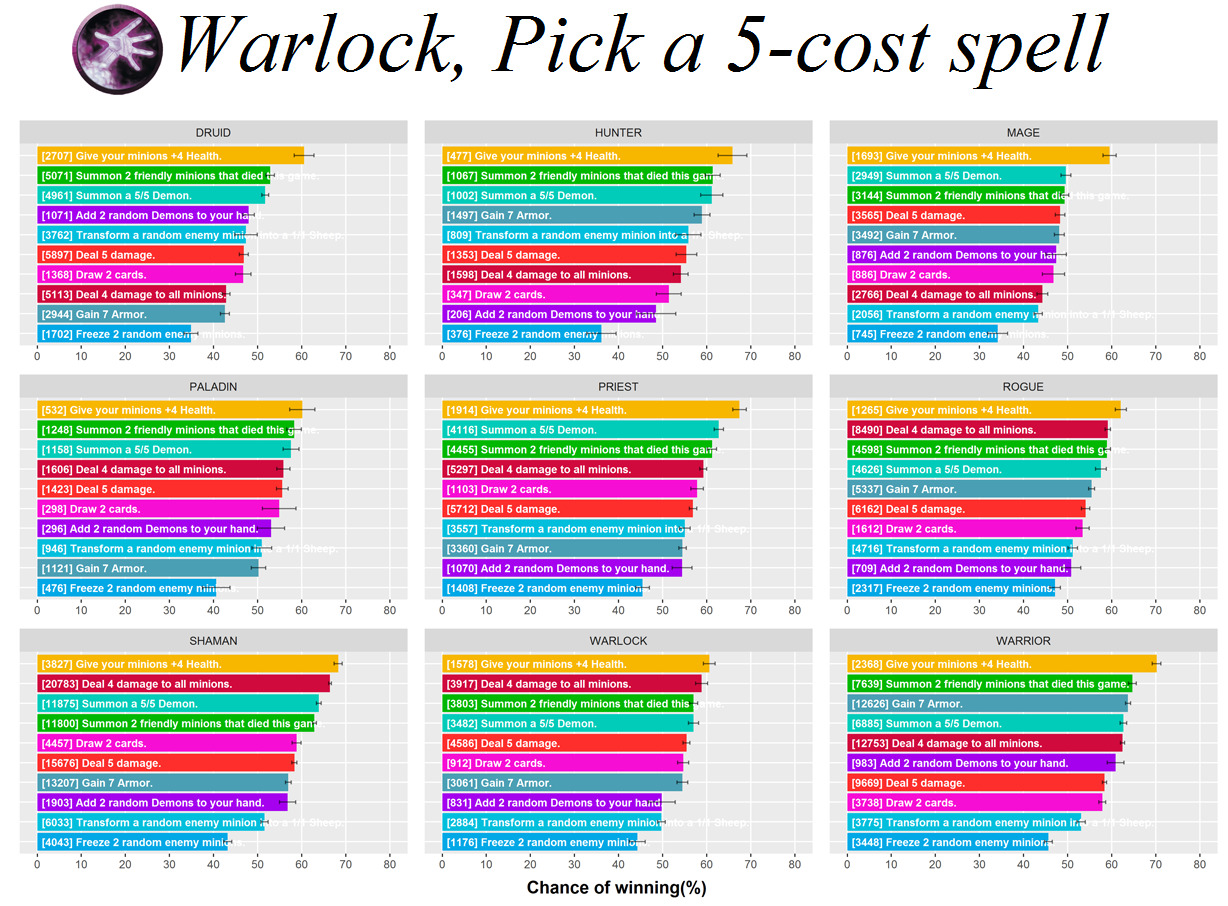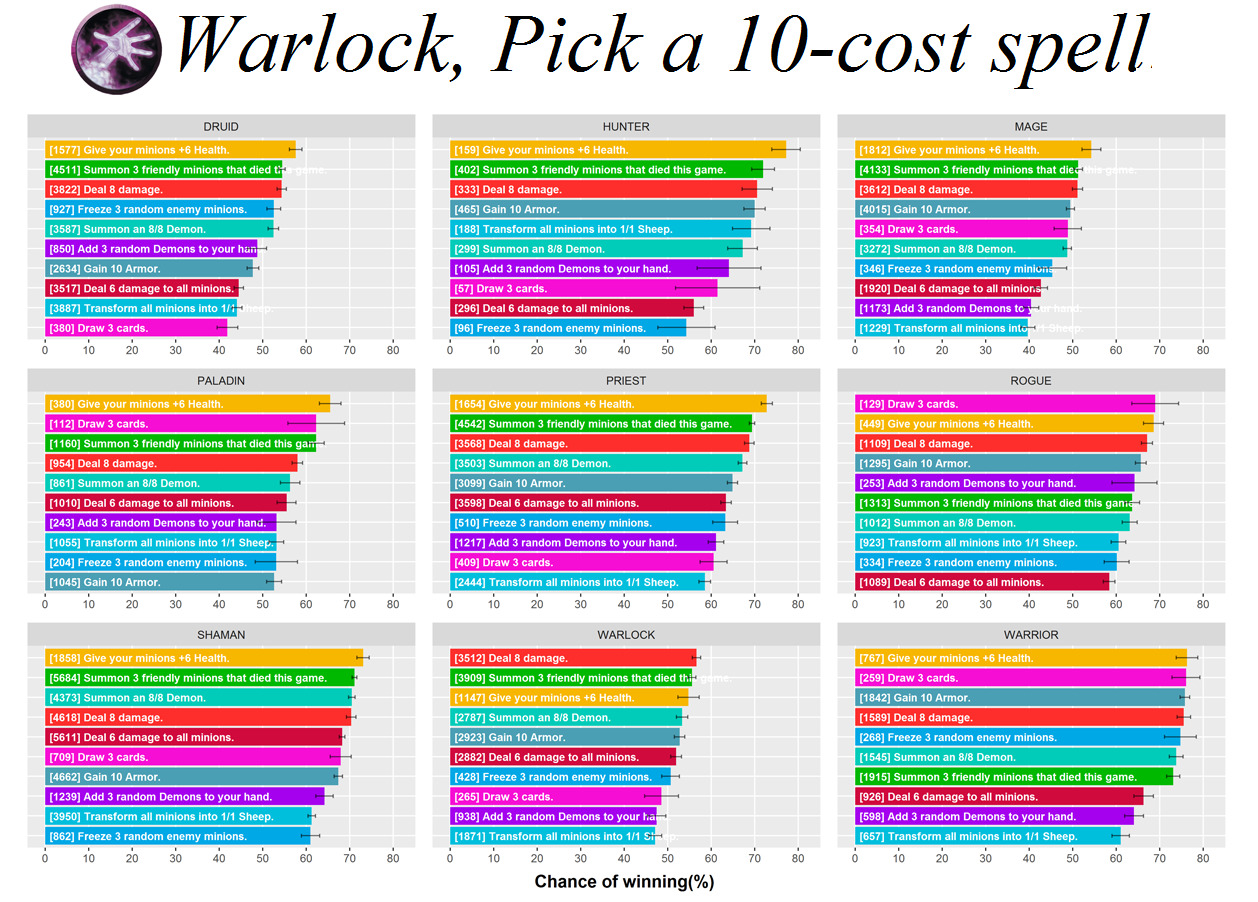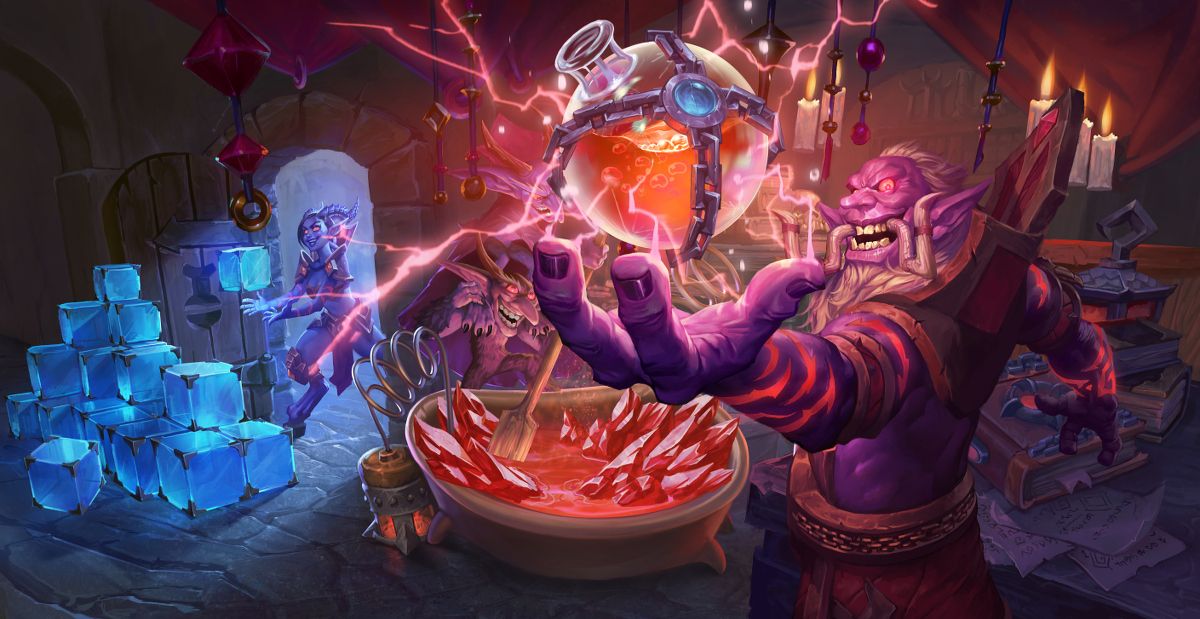

Since the release of Mean Streets of Gadgetzan last December, Kazakus has without a doubt been one of my favorite cards to play. As a fan of Kabal/Reno control-style decks, the added variety from crafting Kazakus spells not only helps keep games fresh and exciting, but also strengthens the sense of player agency over the direction of the game.
However, choosing when to play Kazakus and selecting which spell options (either to win or purely for added fun) can be quite challenging depending on the opponent’s class and which potion effect options are randomly presented. In some cases, playing Kazakus is a great way to get out of a specific bind, but at other times it can be hard to anticipate what the board state will be in the upcoming few turns. For instance, imagine a game where you're playing Priest and you’ve managed to survive the initial rush from an Aggro Shaman deck, it’s turn six and you draw Kazakus, but now what? Do you play Kazakus now or wait? Which spell cost choice is best? Which potion effect options are optimal? What if the choice you wanted isn’t offered, then what should you pick? Let's dive into the data and see if we can find out.
Data collection
The data consists of 52 days of replays (standard ladder games only, ranks 20 through legend) uploaded to HSReplay.net from January 27, 2017 to March 19, 2017. The dataset contains 3.81 million unique Mage, Priest, and Warlock games where Kazakus is present in the friendly player’s deck list. The histograms below presents some basic summary statistics on how many friendly Kazakus potions are created per game:

Some initial observations:
- Mage is played twice as much as Priest, & Warlock is played three times as much as Priest
- In over 55% of games, Kazakus is either never drawn or never played (i.e., 0 potions created)
- Two potions are created in the same game only 7-10% of the time (typically due to Brann)
- In less than 1% of games are 3 or more Kazakus potions created (typically due to cards like Brann, Drakonid Operative, Kabal Courier, & Manic Soulcaster)
Based on the low frequency of multi-Kazakus potion games and also because Brann rotates soon, games with more than one potion created will be omitted from the rest of the article.
To play or not to play Kazakus?
The first big question to address here is which cost option to pick when Kazakus is played, and whether it makes sense to even play Kazakus on a given turn.
Let's look at how win rate is impacted when playing Kazakus vs. not, for each turn. Here, the win rates when playing Kazakus are computed relative to games where players had Kazakus in hand on the same turn and chose not to play it; this ensures that the heatmaps are not biased to changes in overall win rates due to the nature of the game's progress (i.e., for control/Kazakus decks, typically the more turns you survive, the better your chances of winning).
How to read the heatmaps: Each cell in the heatmap shows the increase/decrease in win-rate when choosing to play Kazakus on that given turn compared to the win-rate when players chose not to play Kazakus (i.e., Kazakus was kept in hand). The following figure provides further clarification how to interpret each cell:
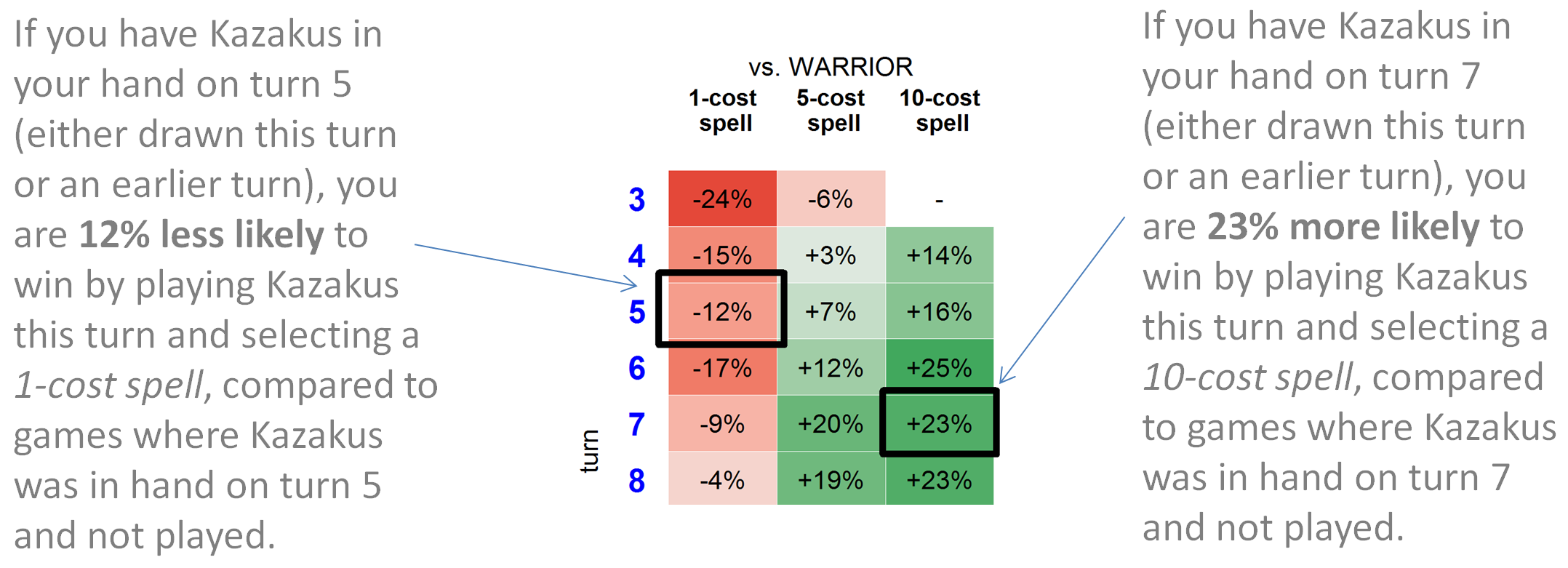
Also worth noting, cells with missing data occur when sample sizes are too low to generate a reliable value.
Results
A lot of insight can be gained from this data. For instance, in some matchups the most effective use of Kazakus is to select a 10-cost spell (e.g., Priest vs. Priest where it’s a game of value). In some cases, coining-out a turn 3 Kazakus and selecting a 10-cost spell (e.g., Priest vs. Shaman) is a good option, possibly because the opposing player may be inclined to play more conservatively around lower-cost potion options. In other cases, coining-out a turn 3 Kazakus and selecting a 10-cost spell (e.g., Warlock vs. Druid) is a terrible idea. If other insights jump out to you, let us know in the comments.
Win rates per Potion Effect
Once we've decided when to play Kazakus and which potion-cost to choose, the second big question is which potion-effects should we select. Let's look at the value of each potion option against each enemy class. Specifically, their average win rate. Here we look at each Potion Effect individually (as opposed to pairs), because it more closely mirrors how Kazakus potions are created in a live game, where the player has no knowledge of the upcoming choices.
The following figure explains each of the elements of the bar charts. Potion effects are color coded using the same scheme across charts to facilitate comparisons. The number of observed games can also be used to gain a sense of how popular each potion-effect is relative to each enemy class. For instance, we can see below vs. Druid that Summon a 5/5 demon is chosen almost twice as often as Give your minions +4 health.
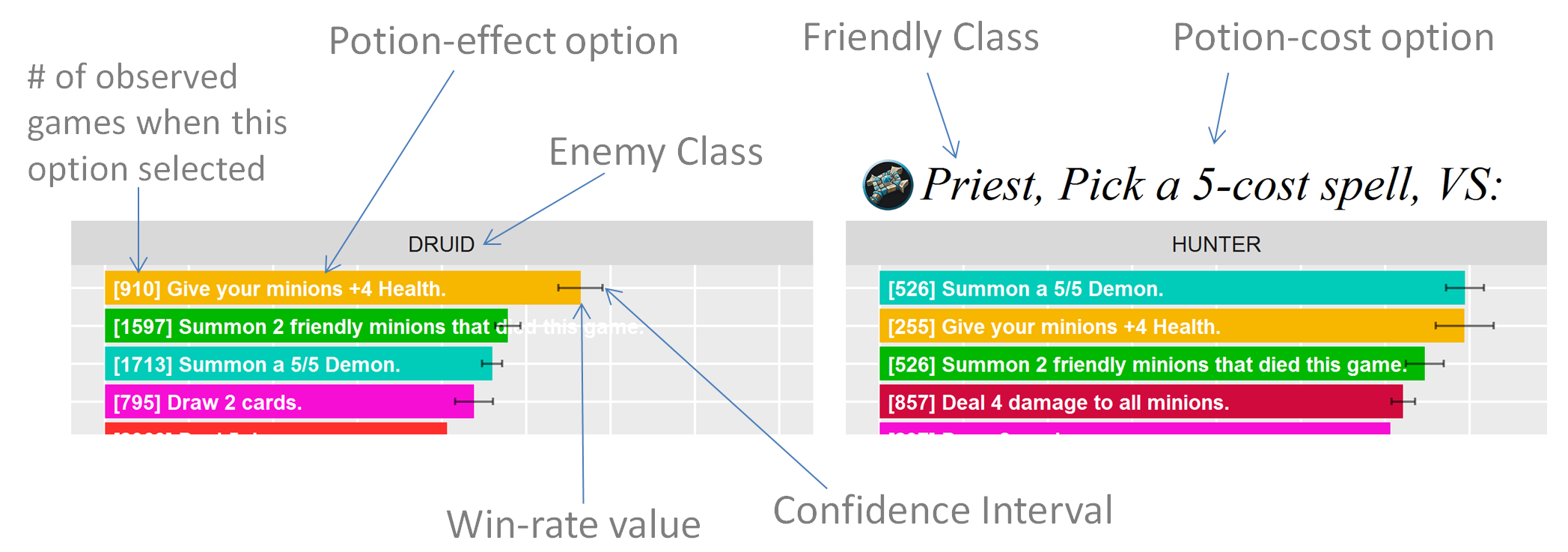
If you're unfamiliar with confidence intervals, you can find an introduction to them here and why we use them.
Results
There is also a lot of useful insight buried within these charts. For instance, there is only a single 1-cost option vs Druid/Rogue/Warrior that correlates with a positive win-rate (i.e. greater than 50% chance). For 5-cost potions vs Warrior the option that correlates with the highest win-rate is the second to least picked! Also not surprisingly, Freezing random enemy minions is almost always the worst option against all classes and for all potion costs! Conversely, giving your minions +2/4/6 Health appears as the top option in almost all cases. Don’t forget to let us know in the comments what other insights jump out to you.
Conclusions
So let's go back to our initial question. It's turn 6 and we're playing as the Priest vs an Aggro Shaman. If you’re not sure what to do, then using our analysis as general heuristics on choice effectiveness could be helpful (keeping in mind that we can never fully model all the possible game contexts and situational factors).
- Do we play Kazakus now or wait? The two green boxes in the heatmap data show us that playing Kazakus this turn tends to improve our likelihood of winning vs. holding Kazakus.
- Which spell cost choice is best? We can see that in general picking the 1-cost spell hinders win-rate, so try avoiding it unless you believe there are no other outs. However, the data shows that creating a 10-cost spell yields a 4% improvement in win-rate, and the highest improvement of 6% occurs when creating a 5-cost spell.
- Which potion effect options are optimal? The 5-cost potion chart shows us that in general Deal 4 damage to all minions and Give your minions +4 health have the highest win-rates. Based on the frequency that these potion-effects are selected, we can see that most players are selecting the Deal 4 damage option, however the +4 health option happens to be the 3rd least selected (indicating that it’s either being correctly picked in rarer circumstances, or that it’s possibly a hidden gem that’s underused).
- What if the choice you wanted isn’t offered, then what should you pick? If you’re really not sure what to pick and you want to try something based on the data we’ve presented here, then in general Summon 2 friendly minions that died this game, Draw 2 cards, and Summon a 5/5 Demon could all be equally viable choices.
Although the actual correct decision to make in a game will depend on the current board, what you know about your opponent, and what else you're playing, we can see how the data that we're providing here lays the foundation for taking a data driven approach to playing Kazakus. In the future, we hope to add an interactive widget to the Kazakus card details page which will continuously update as the meta evolves. Let us know in the comments if you like this way of looking at the data or if you have other ideas for how you'd like to see it analyzed.
Acknowledgements
Many thanks to Dereck Toker for the long hours of data analysis and writing that went into the creation of this article. Dereck is currently a PhD candidate in machine learning and data visualization. He is also a consultant in the video game and patent industries. You can find Dereck on Linkedin or on Discord as Dereck Toker#1938.
Data pre-processing, feature generation, and data visualization was carried out using R, and used the libraries: data.table, Rmisc, ggplot2, grid, & gridExtra. The raw data for this article is available on GitHub.


